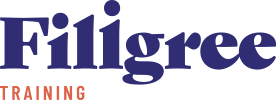What’s your reaction when your manager says you will be doing role plays as part of a training session? Are you thrilled because you know it will be fun and a hands-on experience? Or do you shudder at the thought of having to act out a silly scenario in front of your colleagues?
We are all constantly learning and we also have our own preferred style of doing so. There are a few different models and theories around learning styles and perhaps one of the most common is the VAK Learning Styles Model which was developed by psychologists in the 1920’s. According to this model, human beings prefer to learn in one of three ways:
Visual:
This type of learner internalizes and retains information better when it is presented in a visual manner, for example by using diagrams, charts and pictures. These are your doodling learners. Handouts with visual cues will help these learners absorb new material so they can revisit them after a session and this will help them process the learning.
Auditory:
These learners prefer listening to what is being presented and they often choose to read out loud to themselves to reinforce the learning. Engage auditory learners by relating stories and stressing key words.
Kinesthetic:
This type of learner prefers to learn and retain information by doing things, having experiences. They like to get involved using a hands-on approach. Group activities are usually encouraged for kinesthetic learners. When faced with something new, these learners throw away the manual and dig in, trying things out for themselves.
The VAK acronym was later revisited by Neil D. Fleming, a New Zealand-based teacher, who refined the model to read VARK. Fleming’s research introduced a fourth preferred learning style:
Reading/Writing:
These learners read and write information presented to them in order to understand new material. While this preferred learning style slightly overlaps with the visual style, commonly, a person who prefers to learn this way remembers or organizes things best in his mind by taking down notes.
If you are still unsure about your preferred learning style, think about the last time you attended a presentation. What was it that resonated most in your mind? Was it the charts and visual aids (visual), the words that were used by the presenter (auditory), any possible participation by yourself and the audience (kinesthetic) or the notes that were handed out (reading/writing)?
While most people have a dominant learning style wherein learning is maximized, it is not unusual for individuals to learn using a blend of different styles, and these can also change over time. However, it is also the responsibility of a manager/trainer/teacher to ensure that they use a combination of various training methods and techniques to appeal to a wide audience with diverse learning styles. And this could not hold even truer during these times when virtual meetings and trainings have taken over all in-person facilitation.
Here are a few ideas to ensure learning is achieved by everyone in a way that best suits them (the letters in parenthesis indicate the learning style):
- Present information visually and share links to any relevant websites (V, R/W)
- Use the whiteboard function (V)
- Prepare detailed notes and forward (V, R/W)
- Upload videos and audio recordings that replicate the notes (A)
- Prepare some exercises/quizzes to reinforce learning (K)
- Pace your sessions so the learners can take down notes and listen carefully (R/W, A)
- Allocate time for questions throughout the session (All)
- Engage learners in conversation about the subject matter (A)
- Ask for verbal summaries, have them read out what you might have on screen (A)
- Split audience in groups (in virtual rooms) and have them perform role plays and other activities (K)
- Use hypothetical scenarios and ask learners to share how they would handle those situations (K)
So, the next time you are facilitating some training and there are some learners who get it immediately while others need more explaining, it might not have to do with them. Ask yourself: am I flexing my style, methods and techniques to suit all the learning styles?




